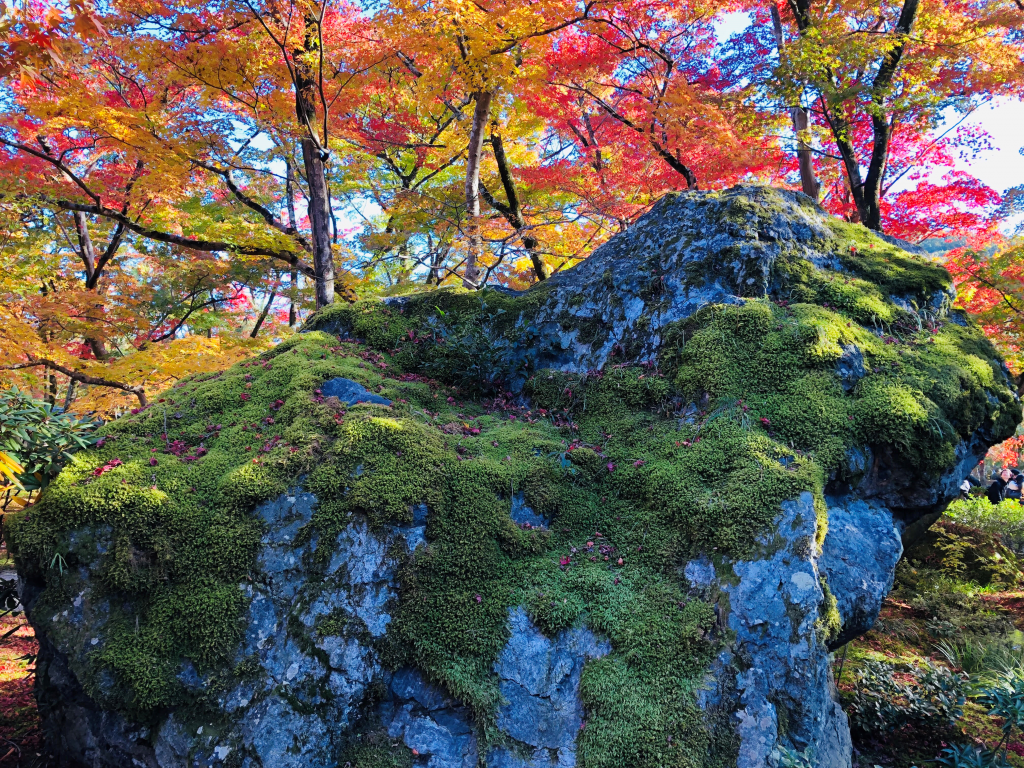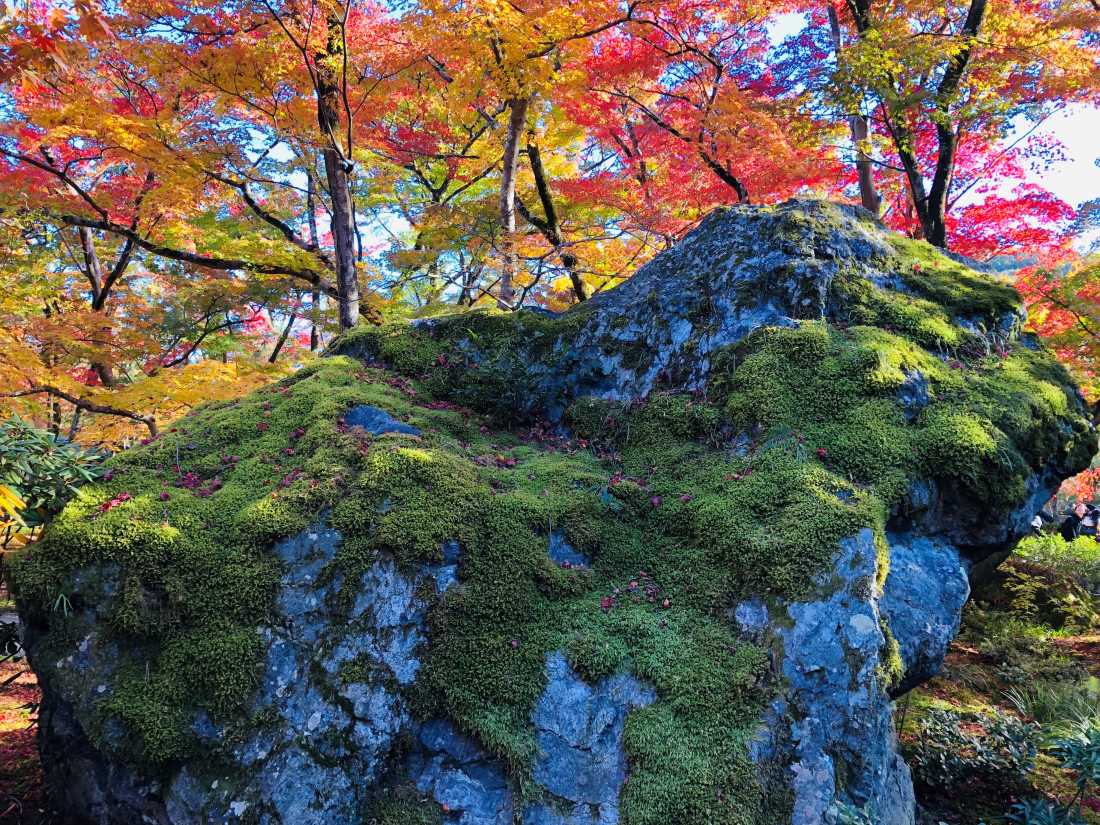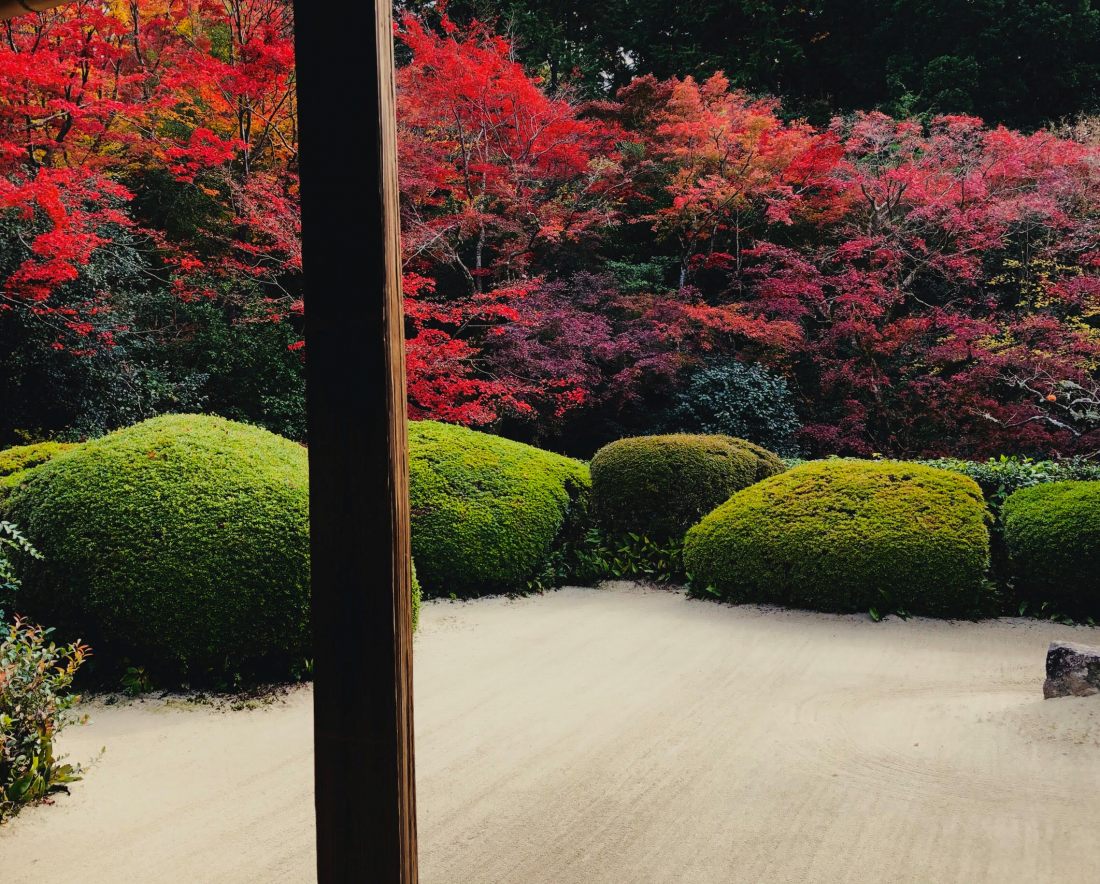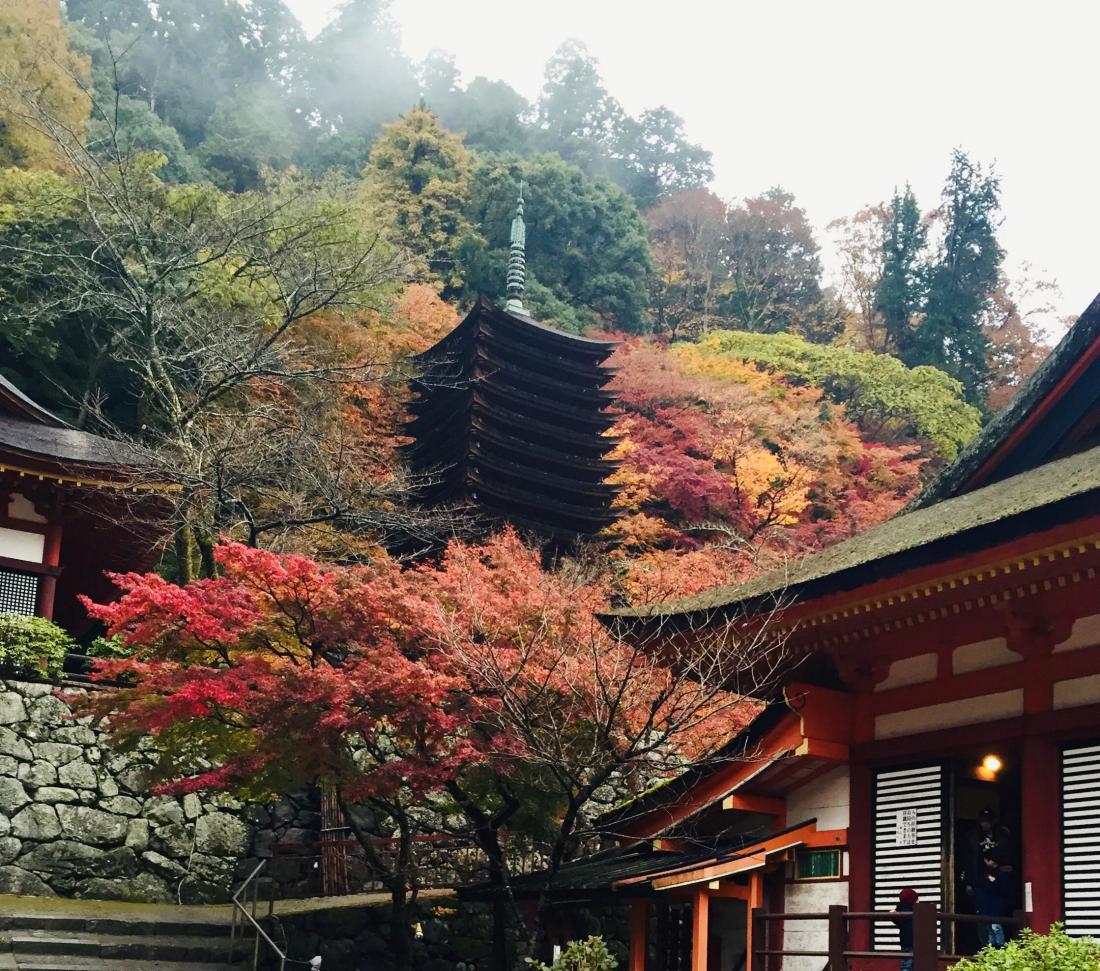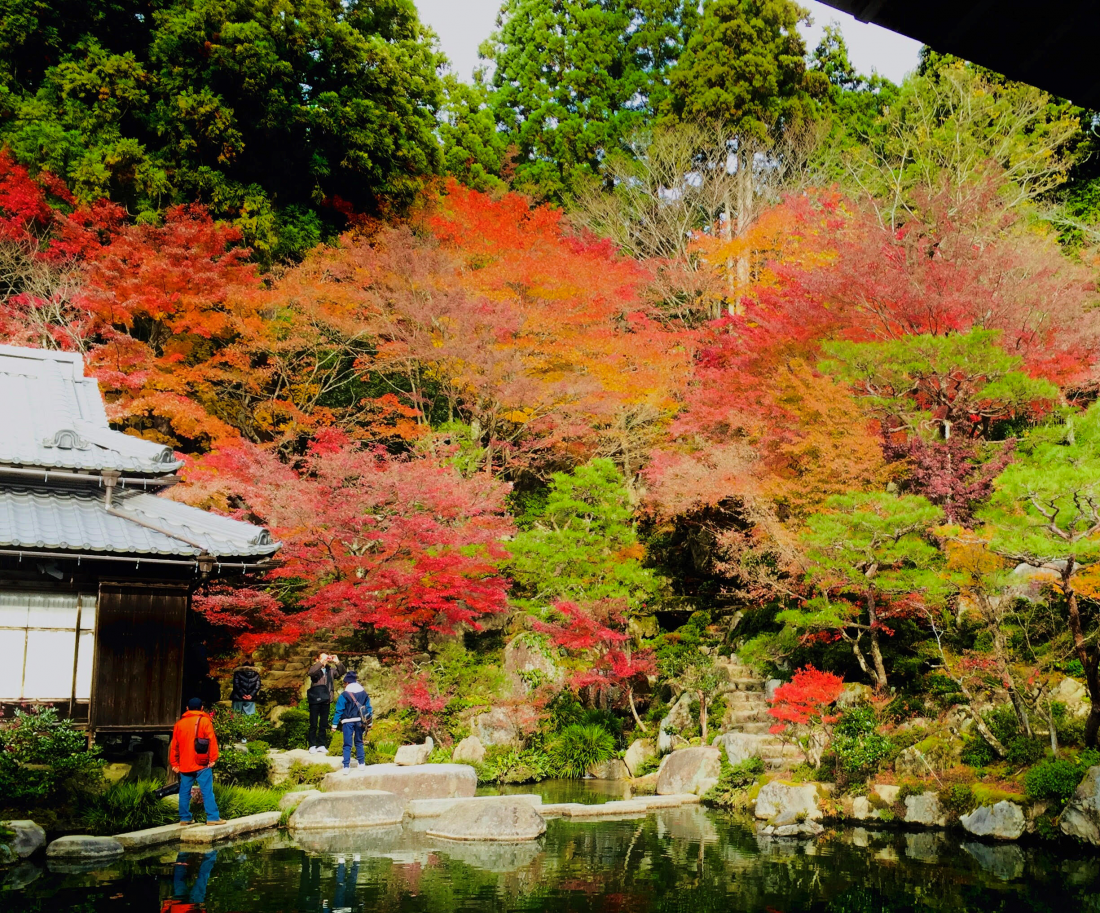“Even in the ancient days,
The Gods holding sway;
I never heard the water
Gleaming red with autumn leaves
In Tatsuta’s stream”
Like what is illustrated from the waka (Japanese poetry), written during the Heian period (794-1185) by Ariwara no Narihira, arguably the main character of the famous literature “The Tales of Ise,” the intrinsic and aesthetic beauty of autumn foliage has stolen many people’s hearts throughout history.
The stunning colors of the autumn leaves including various shades of red, gold, orange and green is often referred to as the colors of Nishiki: a figure of speech which compares the magnificence of the autumn leaves to a kimono, and it is a superb work of natural art we could not possibly adore more.
While Japan is abound with big names and signature sightseeing spots to witness autumn foliage, here are some of the best kept secrets found in the Kansai region.
Hogon-in & Shisendo of Jozanji – Kyoto
You will be spoiled with choices when it comes to momiji gari (autumn leaf hunting) in Kyoto. Hogon-in temple located in Arashiyama and Shisendo temple in the Sakyo district are two hidden wonders that are lesser known but should certainly be on your radar.
Hogon-in
Hogon-in, a sub temple of Tenryu-ji, established in 1461 by Hosokawa Yoriyuki, a deputy of the Muromachi Shogunate, is famed for its Japanese garden known as “The Lion’s Roar Garden.” The colorful foliage and the fresh green moss which beautifully decorate the figure of the holy creature most exquisitely produce a sensational harmony amongst its surrounding garden and the “borrowed scenery” of Arashiyama, which subsequently creates a sublime landscape of autumn.
Admission to Hogon-in’s garden is ¥500 yen. If you wish to view the Hondo (main hall) as well, an extra fee of ¥500 will be required. To access Hogon-in on public transport, catching the train or bus from Kyoto station are your best options.
From Kyoto Station on the JR Line, you should get off at JR Saga Arashiyama Station and walk approximately 10 mins to reach the venue.
In case of catching the bus, you should ride the bus no. 72 and 73 and get off at Keifuku Arashiyama Eki Mae (京福嵐山駅前) bus stop and walk about 5 mins to the venue. You may also ride on bus no. 28 and get off at Arashiyama Tenryuji Mae (嵐山天龍寺前) and walk about 3 mins to reach Hogon-in as well.
Shisendo of Jozanji (Jozan Temple)
Shisendo is the remains of a retirement villa of Jozan Ishikawa; a former samurai of Edo who later converted to a China scholar and a landscape architect. In more recent years the place is known for hosting Prince Charles and Princess Diana during their royal visit to Japan.
The garden of Shisendo specifically arranges its autumn leaves against the sea of white sand so that a superb contrast is created for the crimson red to stand out at its best.
Shisendo is also well-known for introducing the very first shishio-doshi, the water fixture originally designed to scare off boar and other wild animals. The sound of this Japanese water fountain that echoes throughout the tranquil atmosphere is perfectly orchestrated for the audience to enjoy peace, and escape the noise of everyday life.
Admission to Shisendo is ¥500. To access Shisendo on public transport, you can ride on bus no. 5 from Kyoto Station and get off at Ichijyoji Sagarimatu Cho (一乗寺下り松町) bus stop and walk about 7 mins from here to the venue.
Tanzanjinja (Tanzan Shrine) – Nara
For many people, the first thing that comes into mind when you hear Nara will most likely be Nara Park and the sacred deer. However, if you’ve already had your time there and looking for an alternative, take a trip down south to Tanzanjinja shrine.
Tanzanjinja, located in Sakurai city, established during late 7th century to early 8th century, is known to hold a special place in Japanese history, as historic discussions on “Reformation of Taika” between Fujiwara Kamatari and Nakano-oeno-oji (Emperor Tenji) took place here.
The 12-storied pagoda, dedicated to Fujiwara Kamatari, is a designated important cultural property of Japan. The magnificent colors of the autumn foliage gleam at the historical monument of Tanzanjinja and make this place like no other.
Admission to Tanzanjinja is ¥600. To access Tanzanjinja on public transport you will need to catch both train and bus to reach the venue. From JR Nara Station you may board the JR Sakurai Line to Sakurai Station and change to a bus from the south exit to Tanzanjinja Iki (談山神社行) or Tounomine Iki(多武峰行き), which delivers you close to the temple shrine.
Hyakusaiji (Hyakusai Temple) – Shiga
Actually, Shiga is not just about the Lake Biwako. In fact, along with Nara and Kyoto, Shiga was also an ancient capital during 7th and 8th century, and thus many historical and cultural aspects of Japan are embedded within the region
Hyakusaiji, also known as the temple of hundred colors, established over 1,400 years ago by the very famous Prince Shotoku, boasts of its splendid autumn foliage which literally fill its grounds with hundreds of vibrant colors.
The view of the foliage around the water garden is especially beautiful with all the colors reflecting off the water and it certainly earned the title, “A Heaven on Earth,” as described by missionary Luis Frois. This may sound like an exaggeration, but you will certainly know why when you see it for yourself.
Admission to Hyakusaiji is ¥600. In order to access Hyakusaiji on public transport, you will need to ride the train on JR Biwako Line to Omi Hachiman (近江八幡) Station and change to Omi Tetsudo Line to reach Yokaichi Station (八日市駅), then change to a community bus called Chokoto Bus (ちょこっとバス) and get off at Hyakusaiji Honbou Mae (百済寺本坊前).
Feature image: Shutterstock.com
Updated On December 26, 2022

